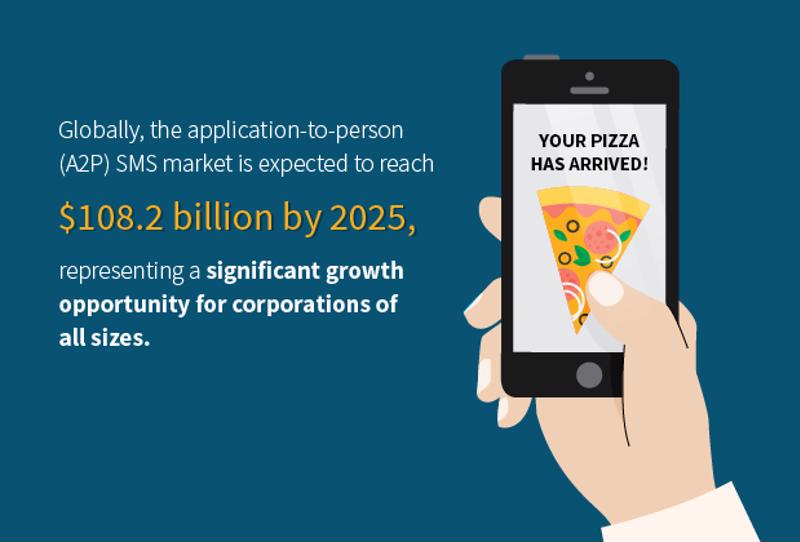Application-to-person (A2P) text messaging is quickly becoming the new standard for how businesses communicate with customers. Compared with person-to-person (P2P) messaging, A2P allows for greater scalability and a much wider variety of use cases. Businesses use A2P solutions to send customers alerts and notifications, authenticate user identities, deliver coupons and much more.
Globally, the A2P SMS market is expected to reach $108.2 billion by 2025, representing a significant growth opportunity for corporations of all sizes. Implementing this technology isn't always as easy as selecting a provider, however. Stakeholders must carefully consider the delivery options available for high-volume A2P applications.
Short Codes
Typically five to six digits in length, short codes represent the original A2P delivery option. They're convenient and practical for marketing campaigns because they're easy to remember. In the past, short codes represented an affordable option for businesses to scale up customer outreach efforts, but newer technologies are beginning to encroach on this space.
There are two types of short codes: shared and dedicated. Shared codes are used by multiple businesses and specific keywords trigger automated responses from the appropriate business. For example, if a pizza restaurant and a coffee shop share the same short code, customer messages containing pizza-related keywords would go to the restaurant. In the U.S., shared short codes are being phased out, though dedicated codes remain a viable option.

10-Digit Long Codes
A 10-digit long code (10DLC) is a phone number like any other. While they are not suitable for marketing campaigns, 10DLC represents a good option for individual customer responses. For example, text-enabled 10DLCs allow customers to seamlessly transition between text and voice conversations with customer support representatives.
Businesses can leverage 10DLCs to capture customer service requests that may be slipping through the cracks. A good strategy is to integrate an SMS API with an existing business service number to capture clients who are attempting to contact the business at that number. In the U.S., some carriers are introducing new 10DLC fees in response to greater utilization of A2P SMS.
Toll-Free SMS
The ability to enable texting on an 800-series number empowers businesses to send and receive higher volumes of text traffic. Corporations can integrate SMS APIs into an existing toll-free number or adopt a new number.
As with other types of 10DLCs, toll-free numbers allow customers to switch between voice and text just as they would when communicating with a friend. Plus, the carrier-approval process associated with 10DLC is much shorter than that of short codes. Businesses that want to establish and scale up their A2P efforts without introducing new liabilities should definitely consider the benefits of toll-free SMS.
A2P provides corporations with many benefits, including better customer experiences, improved scalability and more. Sign up for a free demo of Swift SMS Gateway to learn how to get these benefits for your organization.



